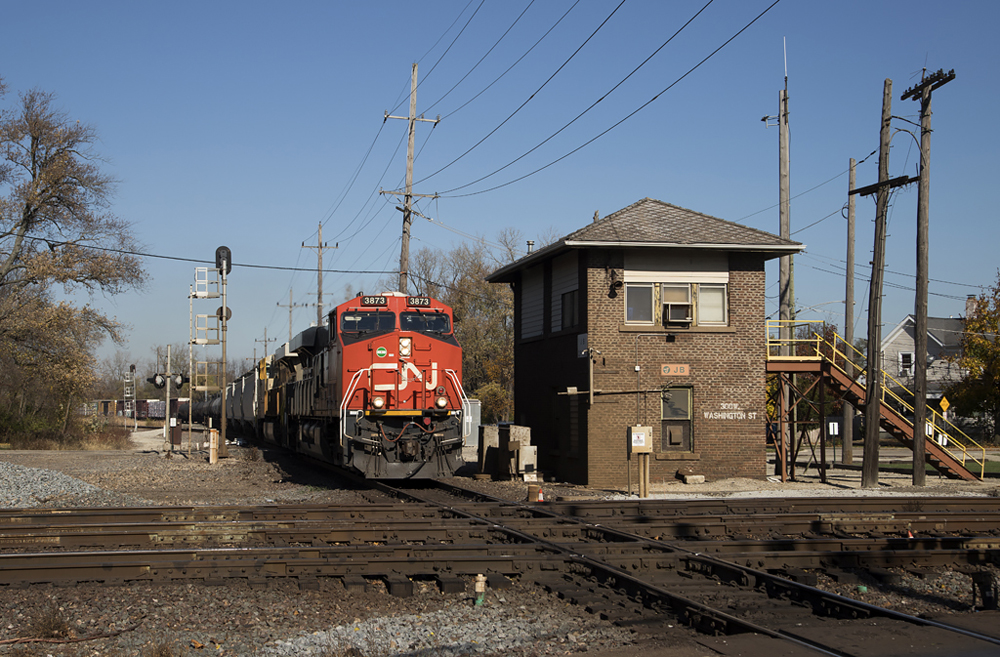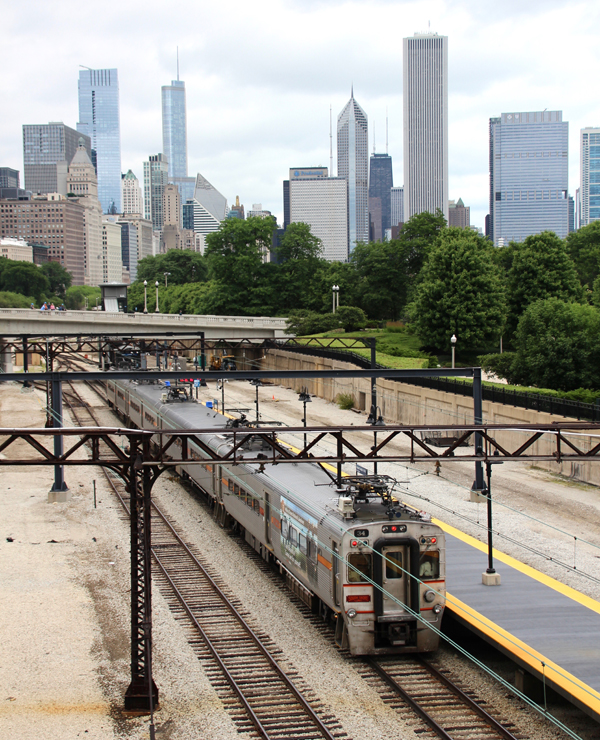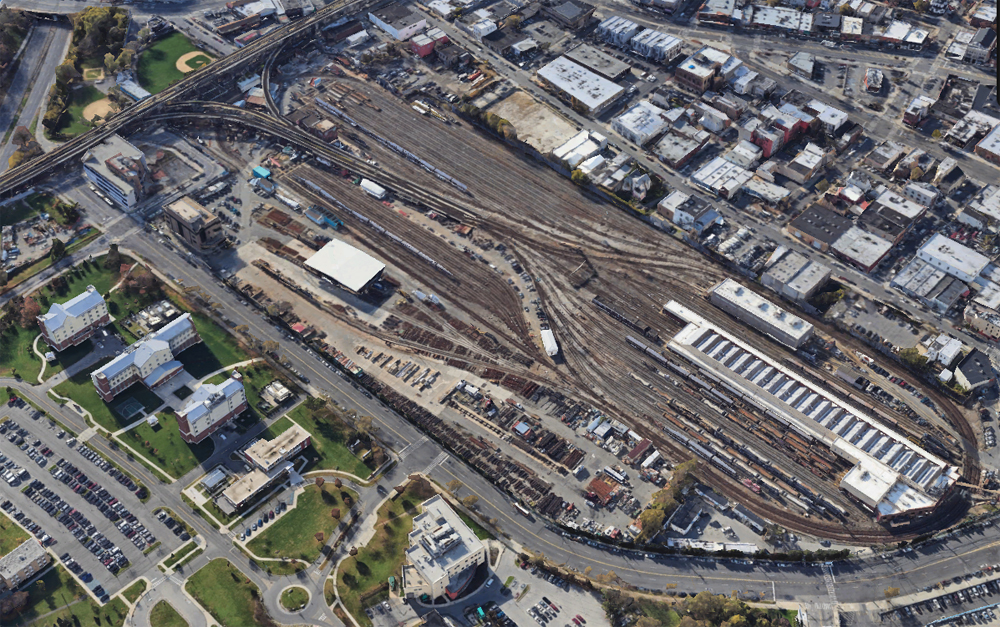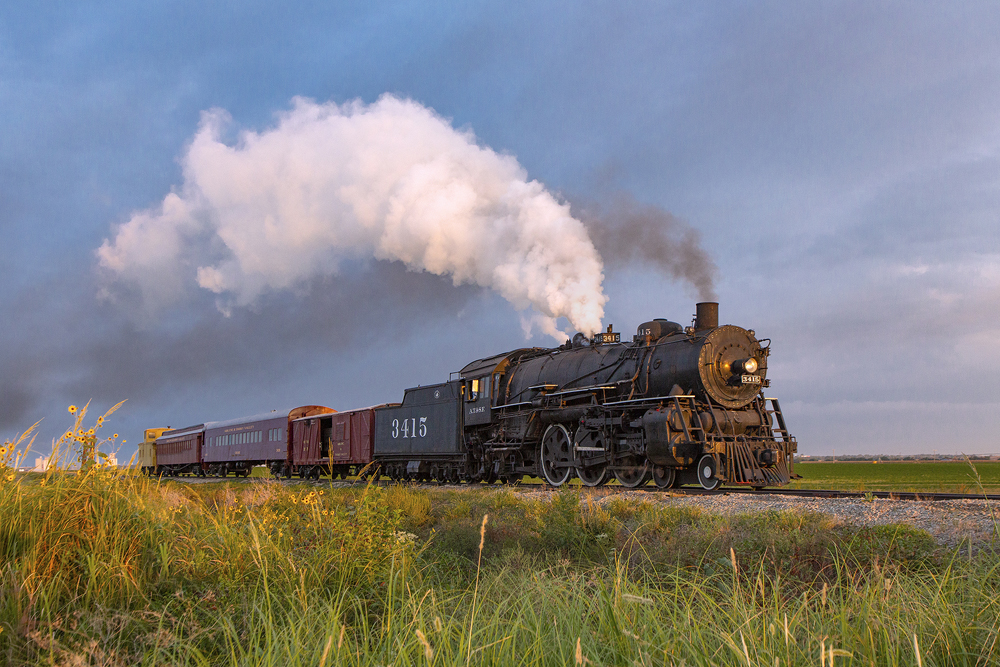
CHICAGO – This column intends to consider the intricacies of today’s carload business in an environment constantly influenced by what’s happening in the world. Labor unions, pandemics, the economy, equipment usage, and technology all effect how railcars move. These factors shape what type of freight goes where, the volume, the urgency, and how the service is performed. Each freight car has a purpose, and a 2-mile freight train tells a story about what is happening in the economy and why railcars are doing what they do.
I recently watched a Canadian National freight train roll across the Union Pacific-CN diamond at West Chicago. It was carrying Canadian lumber, grains, empty tank cars of liquified gas, and a handful of boxcars. Makes sense. Canadian lumber for U.S. markets, carload grains to the Gulf or Chicago. Nothing out of the ordinary. This train was in excess of 100 railcars, though train length is no basis for forming conclusions of economic strength, given railroads’ abilities to move longer trains more efficiently. But I paid close attention to the manifest and was curious what might have been on the drawbars of the same train a year ago, and what it may look like a year from now.
Our focus this month is a topic of mainstream news – the Federal Reserve’s efforts to reel back inflation without tipping into a recession. Bank leaders have raised interest rates 0.75 percentage point the last four meetings. Inflation remains high at 8%. The cost of borrowing is above 4%, and the central bank has hinted that rates may climb higher than originally anticipated. The Fed shows no sign of pivoting to looser monetary policy. It wants to see results. America is now in a wait-and-see pattern as the Fed looks for signs that its policy is helping fix inflation. The economy, thus far, is mostly indifferent. Labor markets are hot, and consumers are spending. It’s going to take more time for the economy to respond to what the Fed has already enacted.
There have been signs of a pullback in some sectors, but inflation, the benchmark that has the Fed’s attention, remains stubbornly high. The market is timid about where things go next and the increased cost of borrowing has started to blemish inflation-sensitive markets, such as housing, where lumber prices have fallen 60% this year to $430 per thousand board feet. But further rate increases seem necessary, according to the Fed, to bring inflation to manageable levels, even at the greater risk of a recession.
Feedback from recent Fed meetings suggests that bank leaders may choose less aggressive rate increases as leaders grapple with this challenge and mounting fears of overextending the economy into a deep recession. To keep this railroad relevant, I find an appropriate analogy in a locomotive engineer and his or her train handling. Heavy train braking isn’t going to result in an instantaneous reduction in speed, just as raising interest rates won’t cure inflation overnight. It will take time for those freight cars on the rear of the train to slow, and it will take time for the economy to respond to tighter policy.
The Fed has certainly applied the air brakes – and dynamic brakes – on a free monetary world and now everyone waits for the slack to bunch in. Hopefully the Fed can be as proficient in its handling of inflation as a locomotive engineer is in his or her train handling on hilly terrain. No one wins if we all come to an abrupt stop.
Chase Gunnoe works in marketing & sales for the freight rail industry and is the author of Carload Considerations, a monthly Trains News Wire commentary series. It discusses the freight rail industry, commodities, and economic trends. Its views are the opinion of its author with no particular emphasis on a specific railroad or shipper.














My leading economic indicator is scrap. When scrap movements slow down than 3 to 4 months later the economy will slow down. Same with acid. When acid shipments fall, three to six months later the economy will slow.
I have seen that many times over the years.
Great article and photo. Where is the EJ&E “manned power”?
From what I can see the biggest effect the interest rates increases have had is to put the breaks on the real estate market. I don’t think the increases in interest rates have affected the prices of consumer goods or energy. For inflation to slow down I think the war in Ukraine has had the biggest effect on prices especially energy and grain. As for employment in the SF bay area there have been thousands of layoffs at facebook and twitter. Amazon just announced layoffs as well.
All I can tell you is the Fed is doing it wrong, they should stop raising interest rates right now and just leave the economy alone. Even they don’t know that we’re a consumer driven economy…no consumers, no economic growth(GPD is 70% consumer spending). If it was up to Warren Buffett, we’d still be printing money as if it was going out of style. The national debt means nothing, the U.S. will never default so anyone that worrys about the debt is going about it all wrong…I prefer to trust the Oracle from Omaha over economists anyday.
Release the brakes now, you’ve slowed it down enough…it’ll either turn into a runaway or just go fast enough to not derail or crash.
As the national debt increases so does the amount of interest that has to be paid in order to sell that debt. It gets to the point that the debt payments are a heavy drag on the economy. To offset that, you have to significantly raise taxes. That imposes another drag on the economy as there is less disposable income.
No government that I’m aware of has ever survived unchecked inflation, even if it’s a dictatorship.
Politically speaking, if it wasn’t for a major increase in government spending in this century combined with the very poor energy policies of the last several years we wouldn’t be in the current situation.
Well written Chase. I like the analogy comparing the Fed to a locomotive engineer deciding when to apply some train line down when descending a hill.
Very well put Chase, I like the way you put it as relates to train handling and the economy. Great Job!
Maybe it’s just me, but what, exactly, is Mr. Gunnoe trying to explain or predict?
I don’t think this is a prediction or even an explanation, more the idea that tighter monetary policy has not (yet) significantly slowed the economy or inflation.
I don’t think even the Fed knows what is going to happen at their own meetings, much less the overall economy, so I doubt Mr. Gunnoe or anyone here will be able to predict what they do. Their dual mandate make it very challenging to apply the proper policy at the proper time.
Agree with Jeff and Ray. Mr. Gunnoe’s regular analysis provides interesting and credible points of view. Far better than the frequent partisan political shouting we often find in these comments.
This the kind of reporting I like.
This is a great way to put modern freight railroading in context – what are the trains transporting, from where to where, and why, and how they relate to social, economic, regulatory and other factors.
This is much more interesting to me than the typical preservation, retrospective and passenger content found recently in Trains. There are pleny of other, better, magazines and sites for those topics.